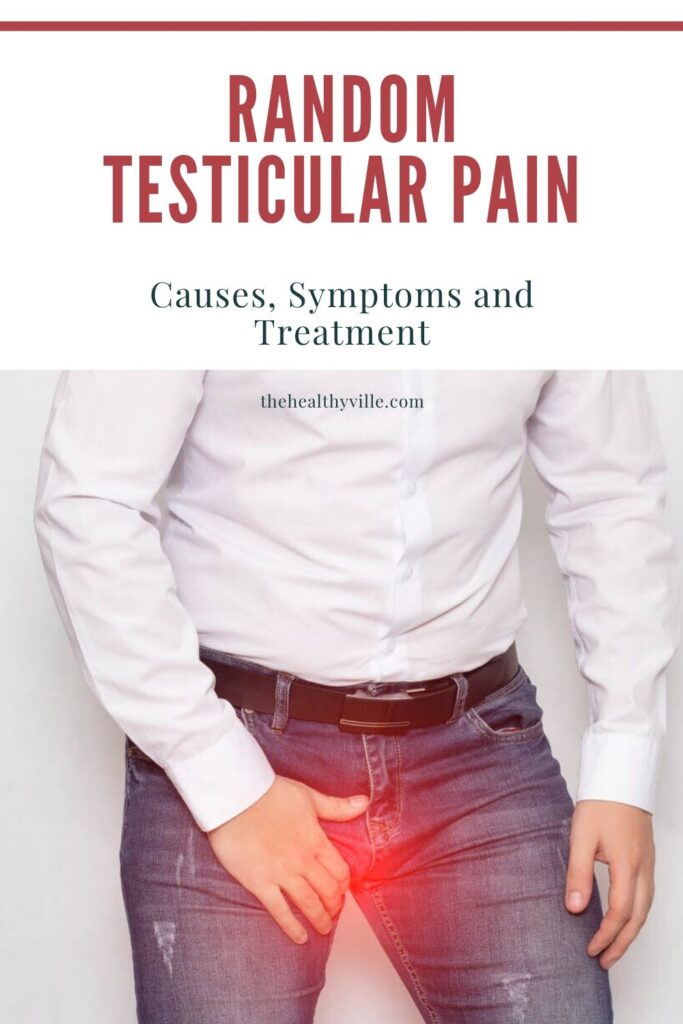Random testicular pain does not necessarily has to mean you have a serious problem, but it does says that there’s an issue you need to address.
The causes behind testicular pain vary according to its severity and according to the specific location of the pathology that causes it. Discover in this article which are the most frequent.
Testicular pain attributable to different causes. The condition can be distressing. It is difficult to find the origin in the first instance, unless it refers to a recent trauma.
Most cases do not require urgent medical attention, although persistent pain should be evaluated by a general practitioner or urologist. By means of simple tests it is possible to decipher the etiology to treat it correctly.
What are the most common causes of random testicular pain?
The causes of testicular pain oscillate between banal situations that resolve on their own and others that refer to the need for surgical intervention. For the person who suffers from it, it is very difficult to recognize if it is one or the other case, so professional consultation is recommended.
Among the most frequent origins of the symptom we have the following:
Trauma or injuries: they can cause intense pain, since they are very sensitive tissues. A direct hit of any kind initiates it, although generally no serious or permanent damage will occur. Sometimes, however, a testicle can rupture or develop a hematocele (accumulation of blood), causing long-term injury.
Testicular torsion: it is an emergency situation. The testicles are located inside the scrotum. They are connected to the spermatic cord, which includes the blood vessels that feed and drain the testicles. When a testicle twists inside the scrotum, its blood vessels also twist, which determines the disruption of the blood supply, with possible permanent tissue damage. In this case, emergency surgery must be performed to save the organ.
Epididymitis: The epididymis is an organ located next to the testicle, in which the sperm matures before leaving. Very often, an infection causes swelling and pain in the anatomical structure, not in the testicle itself. At other times, epididymitis can be caused by trauma or autoimmune conditions. The scrotum swells and feels warm. The pain appears gradually. Infections come from sexually transmitted diseases, such as chlamydia or gonorrhea, or from a urinary tract infection.
Orchitis: Also called testicular inflammation, it can be due to a nearby infection, such as untreated epididymitis, or due to a generalized disease, such as mumps.
Inguinal hernia: occurs when a part of the wall of the abdomen weakens and allows a portion of the intestine or other intra-abdominal content to protrude. If this happens near the scrotum, the hernial sac constricts the blood vessels to the testicle. Coughing or sneezing will usually make the pain worse.
Other causes
Varicocele is a group of enlarged veins in the testicle. This condition involves swelling of the same. In general, it appears on the left side more frequently.
Larger varicoceles can feel like a soft mass on the testicle or you can even see them when you’re standing up. They can have a negative effect on male fertility and their resolution is surgical.
Another cause of testicular pain is cancer, although it is not the most prevalent. Man tends to detect an abnormal lump and painless swelling earlier, which eventually develops into discomfort. It always generates diagnostic controversy in its beginnings. Doctors must differentiate them from the hydrocele (fluid inside the scrotum) and the spermatocele (fluid in the testicle).
What to do when you have this pain?
The spectrum of pathologies that affect the testicle varies from acute pathological events that require immediate surgical intervention to findings. Many of them, although they must are not an emergency.
The priority, then, is to determine those causes that require urgent treatment from the others that can wait and provide a diagnostic window. Generally speaking, if testicular pain comes on suddenly and is of severe intensity, or develops along with other symptoms, such as fever or blood in the urine, a doctor should be consulted immediately.
On the other hand, if the pain is mild, but does not disappear after a few days, it is advisable to consult without urgency. A lump or other change in the testicles should not delay expert opinion, although you can schedule it without the need to attend an on-call service.
Consult when in doubt
Sometimes problems with the testicles cause abdominal or groin pain before the symptom develops in the lower area itself. As always, the priority is to be evaluated when in doubt, since confusion is able to delay necessary attention.
It can be difficult for a person to differentiate between those pains that differ in their attention, from those that require an urgent diagnosis. It is not the patient’s responsibility to know everything about the diseases, although it is to be aware of changes.
Don’t forget to SHARE the causes of random testicular pain with your friends and family on your social networks!

